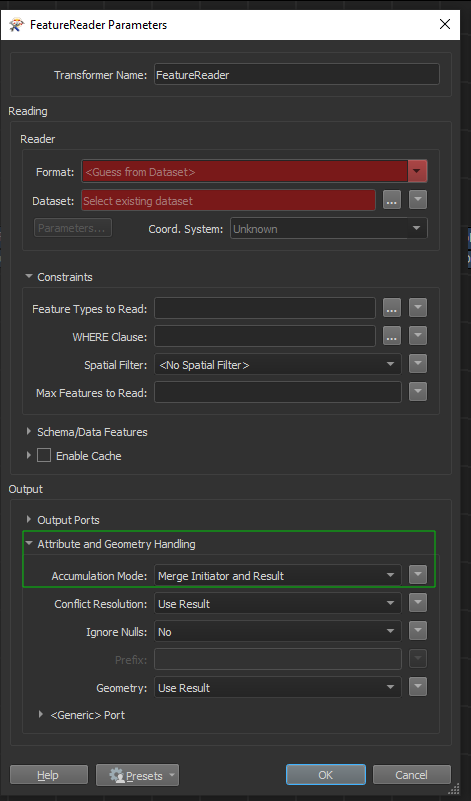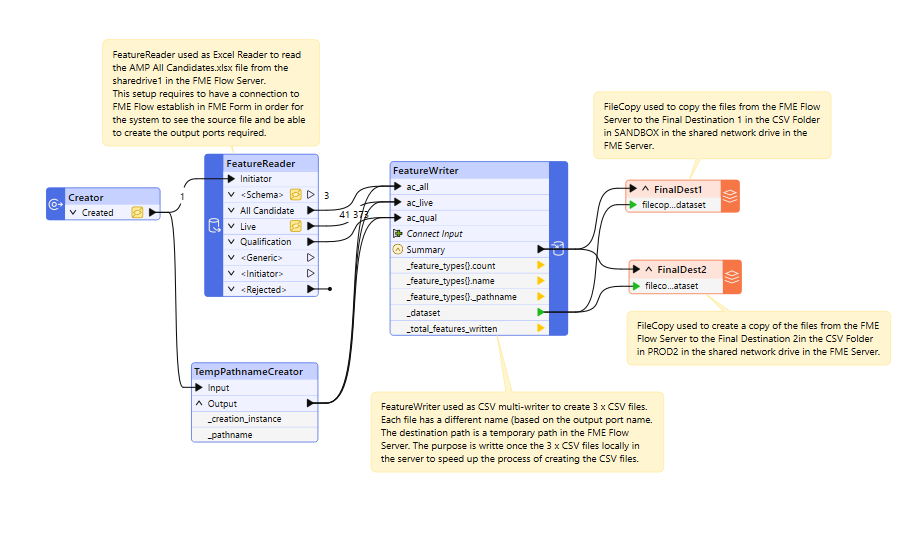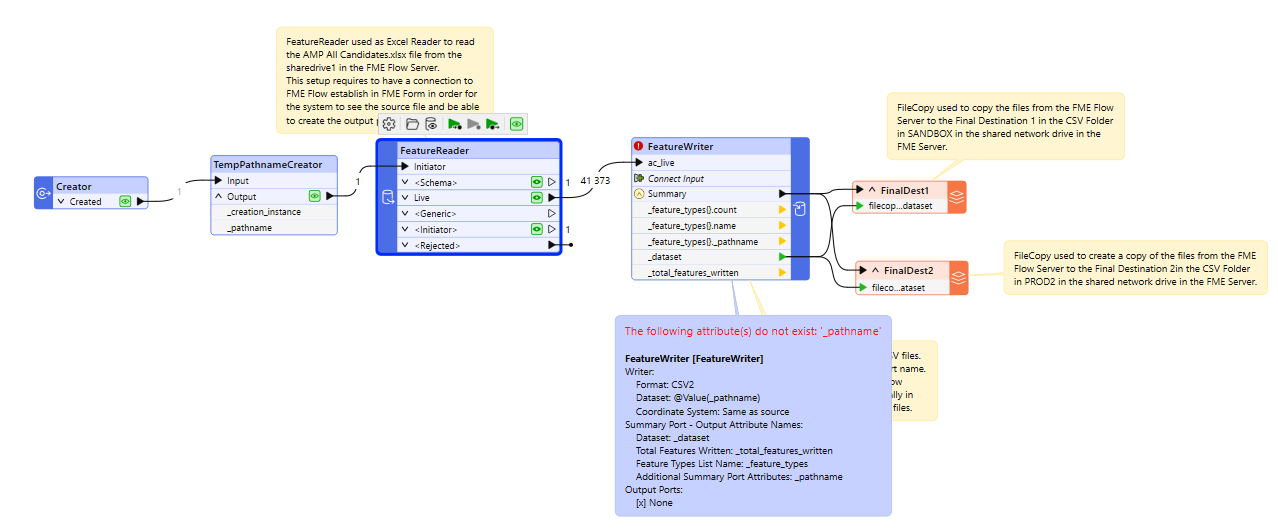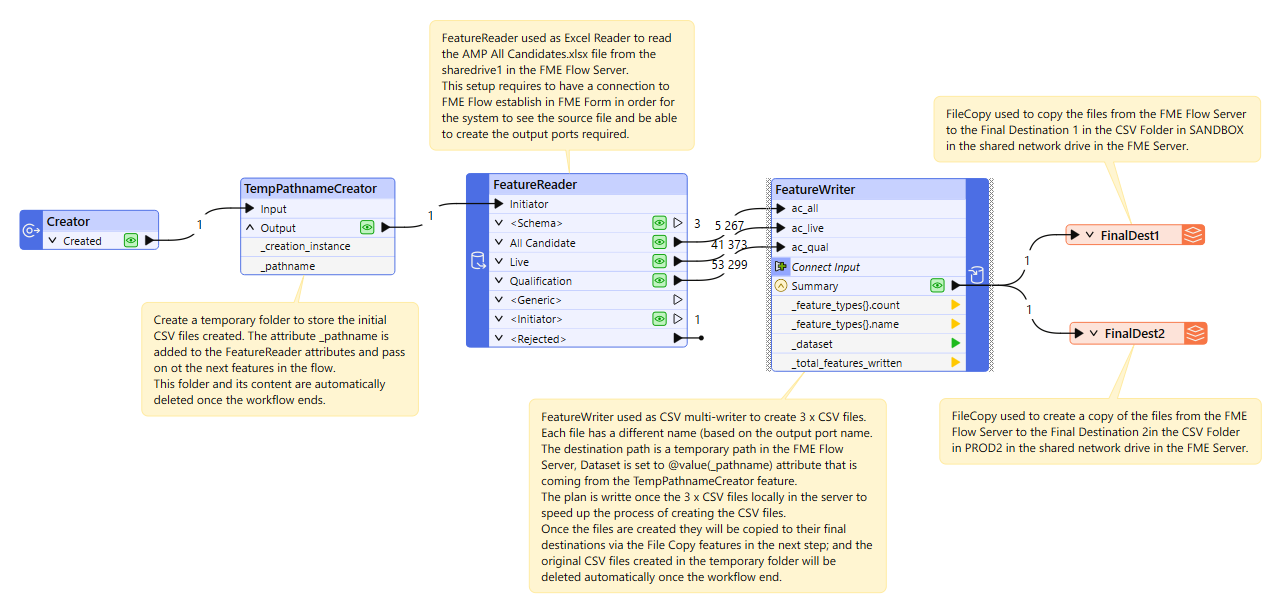Hello,
I was hoping to get your input into how to speed up the following workflow:
Read an Excel File with several sheets from a Network Share → Output each sheet to a different output port → Create a CSV file for each output port in a network share.
I already have the above working, the problem is that CSV writer is taking a loooong time writing the files. My connection to the network is pretty good so it is not a matter of latency between my PC and the network share (at least I don’t think so).
Does anyone have any idea on how to improve the writing speed of the CSV files or what to do improve the overall time it takes for the workflow to complete?.
Thanks in advance.
RZ.-














